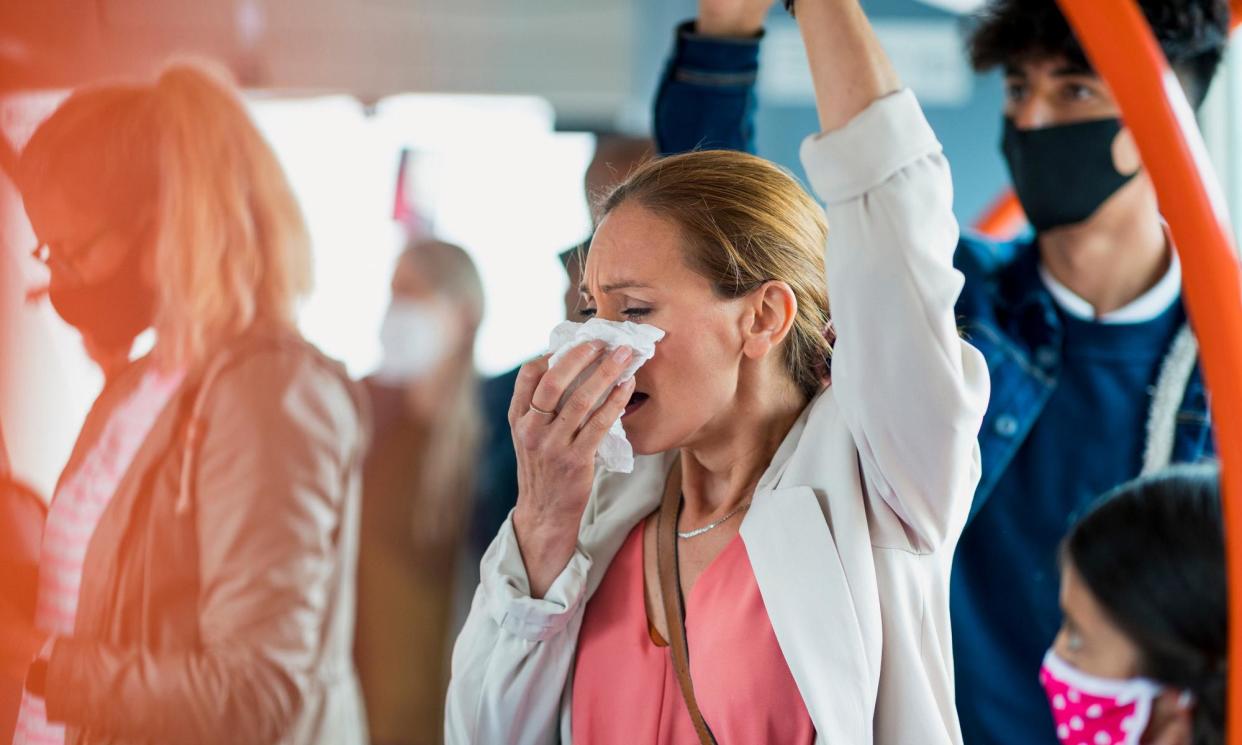Summer wave of Covid in England: how worried should I be?

What’s the current situation?
Getting a true picture of the prevalence of Covid is tricky given that few people now test for infection.
In addition, the Winter Covid infection survey, run by the Office for National Statistics and UK Health Security Agency, has ended.
However, evidence suggests that levels are rising. According to the latest data from UKHSA, Covid hospitalisations in England for the week of 10 June rose to 3.31 per 100,000 from 2.67 per 100,000 in the previous week.
Covid intensive care unit admissions have increased slightly – albeit from a low starting point – while the proportion of people testing positive for Covid based on swabbing offered at particular GP practices has also risen.
“It’s obviously harder currently to collate definitive data on infections, but there seems to be consensus that we are in a period of rising breakthrough infections and hospitalisations,” said Prof Danny Altmann of Imperial College London.
“This is certainly a subject of ongoing concern and need for vigilance, not least in respect of advice on booster uptake for the vulnerable.”
What Covid variants are circulating in the UK?
The virus behind Covid has undergone a host of mutations since it first appeared. At present, the dominant group of subvariants in the UK are all descended from the JN.1 variant that took off during the winter, which is itself related to Omicron.
These subvariants have been informally named “FLiRTs in reference to the mutations they contain, with members of the group including KP.2, KP.3 and JN.1.7.1.
Since very few Covid swabs are being collected, and hence few genetic sequences obtained, it can take longer to identify the arrival, spread and impact of new variants than was the case at the height of the pandemic.
While data is limited, UKHSA has said at present there is no sign these sub-variants, including KP.3, are more dangerous than other forms of the virus.
What is causing the new wave?
While it is possible that both waning immunity and evasion of the immune system by current Covid variants could play a role in the rise, Altmann said the extent to which these factors were contributing was unclear.
Prof Paul Hunter of the University of East Anglia noted that given that much of the data was collected in healthcare settings, most reported cases tended to be in older or vulnerable people.
“I suspect increases in this age group are due to falling levels of sterilising immunity, especially given that the uptake of the spring booster in people over 75 years old was little more than 60%,” he said.
But Hunter said younger people could also be at risk of infection. “In people who were infected over winter, sterilising immunity would be falling by now, and in people who had not had an infection then or since, there would be relatively little sterilising immunity left,” he said.
How concerned should we be?
The good news is that the rate of Covid hospitalisations is still below what it was last winter, while Hunter said the severity of infections now is much lower for most people than was the case even a year ago.
But that doesn’t mean there aren’t grounds for concern. Data shows that in the week ending 14 June, 152 deaths in England and Wales involved Covid, and 100 were due directly to Covid.
“So although Covid infections are now relatively trivial for most people, some – and particularly the over-75 age group – are still suffering from severe disease. That is why the spring booster was still important for this age group,” said Hunter.
While the spring booster programme ended on 30 June, vaccinations are available privately – although they come with a hefty price tag.
Experts added that people should continue to take precautions. “If you are showing symptoms of Covid-19 or flu, help protect others by staying at home and avoiding contact with other people, especially those who are more vulnerable. If you do need to leave home, consider wearing a mask,” said Dr Jamie Lopez Bernal, a consultant epidemiologist at UKHSA.
“It’s all about trying to strike an informed balance in how we now live our lives,” said Altmann. “We’re far from the terror of an unvaccinated, vulnerable population in 2020, but your FLiRt infection can still lay you really low for a week, carries a significant risk of leading to long-term, disabling long Covid, or could have a significant impact if you or the next person you infect is in a highly vulnerable group. We’re far from a state where this is ‘just like a cold’ and should just be ignored.”

 Yahoo News
Yahoo News 
